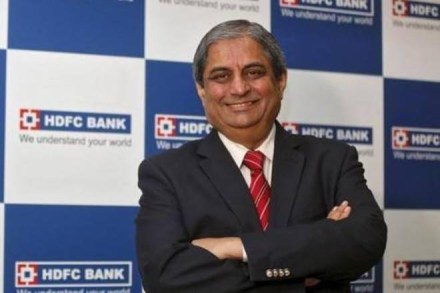In a clear indication that the rate cycle has turned, loan and deposit rates are all set to go further up, HDFC Bank managing director Aditya Puri told FE. “Deposit rates will go up so will loan rates. As soon as our asset-liability committee (ALCO) meets, we will look at the situation,” he said, adding that the cycle is changing and interest rates will go up; bond rates will also go up and the yield on the 10-year government security will be in the range of 7.7-7.8%.
Some large lenders like State Bank of India (SBI), ICICI Bank and Punjab National Bank (PNB) have raised one-year marginal cost of funds-based lending rate (MCLR) in the range of 10-20 basis points (bps).
Some lenders like SBI have also raised their retail deposit rates by 10-15 bps.
Interestingly, HDFC Bank raised its MCLR by 10 bps in February signalling an upward trend in loan rates. While the lowest one-year MCLR is at 8.15%, a deposit of the same tenure earns an interest of 6.4% in SBI and 6.75% in HDFC Bank.
According to Puri, working capital demand has already picked up and it will largely remain with the banks.
The increase in demand for working capital, he said, is partly because of inflation, rise in oil prices also because of whatever disruption was caused by GST and demonetisation, which is now behind us.
“Project finance, I would say we have moved from brownshoots to greenshoots. In the sense, first people were talking and now there are industries that have grown. So if you look at cement, steel, consumer durables, vehicles and there are a lot of areas where people are putting new projects,” Puri explained.
On linking bank loan rates to an external benchmark, Puri expressed his reservations. According to him, globally, when an external benchmark is used, there is enough liquidity available for that benchmark to have relevance. “If you say repo rate or CD rate, there is not enough depth in the market. When you talk about external benchmarks and floating rates, then you would end up with floating liabilities as well,” he said.
“In addition, overseas when you talk about these benchmarks, they have a very good derivative market where you can hedge your risks. In India 95% of the banks are funded by fixed deposits. Now if you link to a benchmark which has no correlation to your cost of funds, what do you think is going to happen in an imperfect market?,” he said.
While the MCLR regime was introduced in April 2016 for better transmission of policy rates into bank lending rates, a large section of borrowers – existing borrowers – have been left untouched. The new regime was introduced only on fresh loans and existing borrowers have to pay a fee to move their loans from base rate to MCLR. Keeping this in mind, the central bank has decided to harmonise the methodology of determining benchmark rates by linking the base rate to the MCLR with effect from April 1, 2018.
